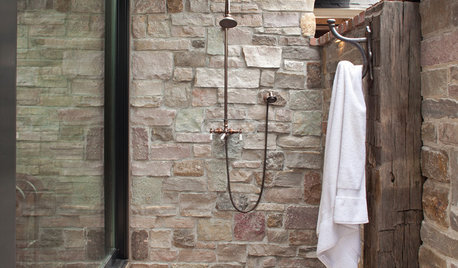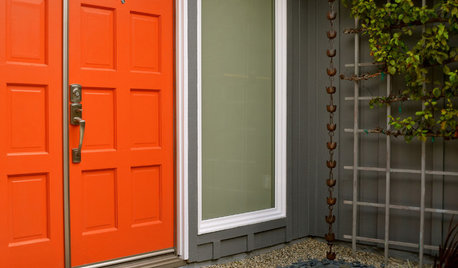Refinishing Chesnut Doors
lisa33
9 years ago
Related Stories

GREAT HOME PROJECTSWhat to Know Before Refinishing Your Floors
Learn costs and other important details about renewing a hardwood floor — and the one mistake you should avoid
Full Story
GARDENING AND LANDSCAPING28 Outdoor Projects Everyone Should Know About
Learn how to refinish your wood deck, make a garden fountain, add a shed and more
Full Story
MIDCENTURY HOMESHouzz Tour: Pursuing the Good Outdoor Life in Palos Verdes
With a refinished patio and an added deck, these homeowners can enjoy the abundant California sunshine
Full Story
MOST POPULARHow to Choose a Front Door Color
If choosing a door paint isn't an open-and-shut case for you, here's help
Full Story
DOORSBarn Doors Slide Into Style
You don't have to live in a farmhouse to use a barn door in your home. Here's how to make these space savers work in any room
Full Story
DOORS5 Questions to Ask Before Installing a Barn Door
Find out whether that barn door you love is the right solution for your space
Full Story
GREAT HOME PROJECTSUpgrade Your House With New Interior Doors
New project for a new year: Enhance your home's architecture with new interior doors you'll love to live with every day
Full Story
DOORSSee How Salvaged Doors Add Character to a Home
Designers use distinctive old doors to make a statement in these spaces
Full Story
REMODELING GUIDESHouzz Planning: How to Choose a Front Door
Wood, Fiberglass or Steel? Find the Right Material for Your Entry Door
Full Story
DOORSLet's Walk Through the Latest Door Trends
The functional feature has been getting a dose of flexibility, creativity and glamorous detail
Full Story







User
rwiegand
Related Professionals
Lakeside Cabinets & Cabinetry · Tabernacle Cabinets & Cabinetry · Deerfield Beach Carpenters · Lake Shore Carpenters · Chalmette Flooring Contractors · Johnson City Flooring Contractors · Nashville Flooring Contractors · North Aurora Flooring Contractors · Oceanside Flooring Contractors · San Ramon Flooring Contractors · Troy Flooring Contractors · Long Beach Furniture & Accessories · Racine Furniture & Accessories · Carlsbad Furniture & Accessories · San Juan Capistrano Furniture & AccessoriesUser
lisa33Original Author
rwiegand
NHBabs z4b-5a NH
User